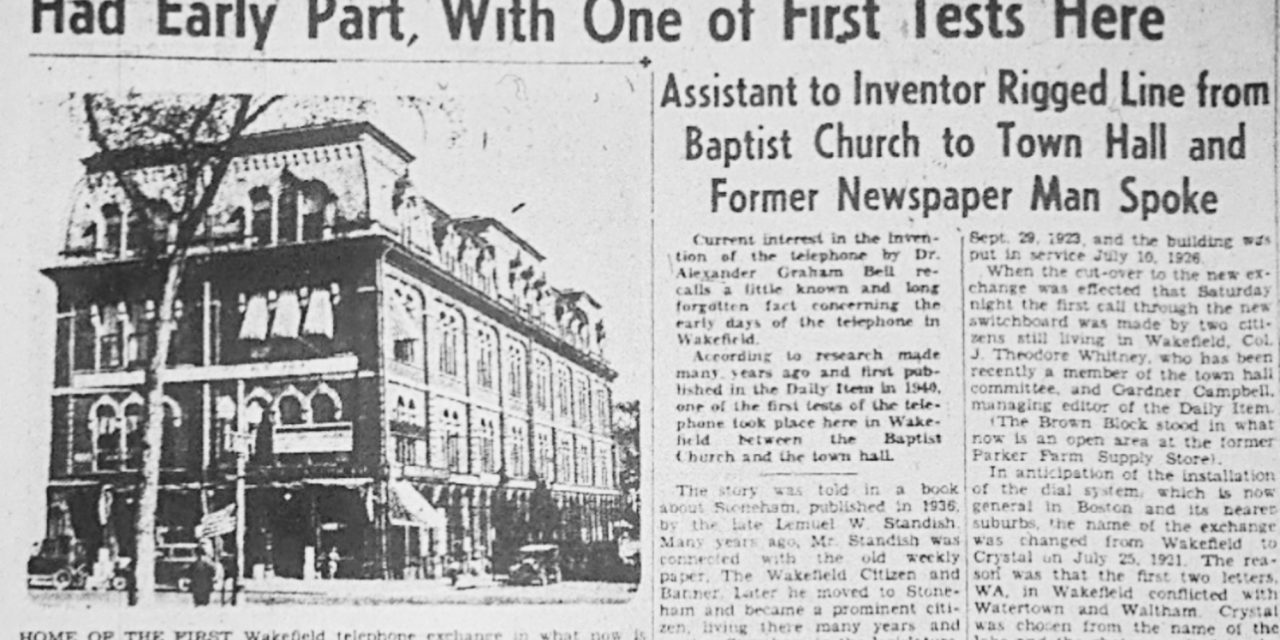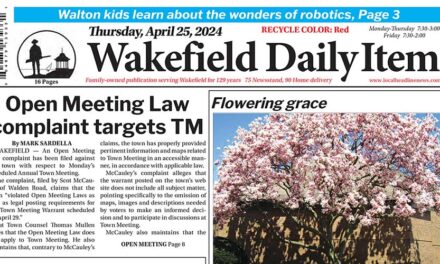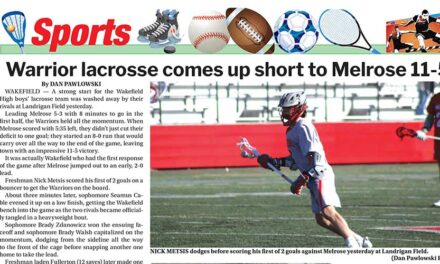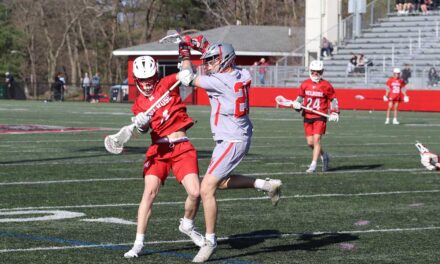Ms. Looking Backward has been at the helm of the retrocraft for just a little over a year. It has been “wicked awesome fun” to bring you stories from our town’s past. We hope you have enjoyed them, and we thank readers who have written to offer comments and send photos—your input is tremendously appreciated. The retrocraft has visited crimes, politics, devastating fires, building and zoning problems, fairs and pageants, local sports, “firsts” of various kinds, and Lake Quannapowitt with its issues of weeds, beach closures, and photos of sailors, swimmers, and skaters. Our favorite stories have been about Wakefield people. Before leaving 2021, the retrocraft is fired up to take a sentimental journey to recall some of our favorite people stories—in no particular order.
In March we brought to you a story from 1961 about a local man who was the creator of false eyelashes: Wakefield resident Jimmy Giuliano of 59 Woodcrest Drive was a barber in town; he had a patent on his innovative beauty creation and manufactured and distributed them nationwide. “Prior to operating a barber shop and beauty salon in the Junction, he worked as a make-up man in Hollywood. He also is a WWII veteran and optical expert who fashioned artificial eyes, ears, and noses for wounded Marines at the Portsmouth Naval Hospital.” Jimmy Giuliano appeared on a television program popular at the time called “What’s My Line?” where guests would try to stump a panel of celebrities as to his or her line of work. The celebrities would pose questions to which the answering guest replied only “Yes” or “No.” Jimmy’s success as an entrepreneur of false eyelashes did not carry over to his appearance on the TV show—he failed to stump the panel. Celebrity Arlene Francis was a radio and television talk-show host who appeared as a regular panelist on What’s My Line for about 25 years. Together with Joey Bishop, a popular comedian, she guessed Jimmy’s line after only two rounds of panelist questioning, exclaiming that she was wearing a pair of the eyelashes at the very time.
In January, under the headline, “‘The Thing’ Is Lost Check for Over $10,000,” was a 1951 story that tugged at our heartstrings: Mario Cresta, then only 10 years old, and Linda Archibald, age eight, saw and picked up an envelope from beneath a mailbox that was shared by five families. In young Mario’s words to the police, “I thought it was a telephone bill and thought it was for Mary [his sister], ‘cause I saw Mary on the ‘thing’ [envelope] and I didn’t read it all. It wasn’t sticked,” referring to the envelope flap. Mario brought the envelope along with the family mail to his mother, Mrs. Filomena Cresta, who opened the “unsticked” envelope and found a bank check for $10,463.82, payable to Mary DiGiacomo; the addressee on the “thing” was also Mary DiGiacomo, 146 Water Street. Miss DiGiacomo, however, had recently wed and become Mrs. Antonio DelRossi; Mrs. Cresta didn’t recognize the former name as being at that address, and she phoned the police. Some sleuthing by Wakefield’s finest and postman James Lanigan, who recalled delivering two pieces of mail addressed DiGiacomo to the DelRossi residence at 144 Water Street, solved the mystery of to whom and where the piece of valuable mail was originally supposed to go. Mrs. DelRossi rewarded young Mario with a $5.00 bill—a sizable reward for a little boy in those days.
In March 1951, the 75th anniversary of the invention of the telephone was being celebrated at the Boston Museum of Science and the Item ran a story about Wakefield’s important part in that history: “Current interest in the invention of the telephone by Dr. Alexander Graham Bell recalls a little known and forgotten fact concerning the early days of the telephone in Wakefield. According to research made many years ago and published in the Daily Item in 1940, one of the first tests of the telephone took place here in Wakefield between the Baptist Church and the town hall.” Mr. Lemuel W. Standish, who had been on the staff of the old weekly town paper, the Wakefield Citizen and Banner, was the aforementioned researcher; he “happened to be the first person to test the new invention outside the scene of its first development.” The Item continued the story, “Charles Brown, a Wakefieldian, was an assistant to Dr. Bell. He arranged a wire between the Baptist Church vestry and the town hall, and from the church Brown and Mr. Standish called up Charles F. Hartshorne, who was town clerk of Wakefield for more than 50 or 60 years.” According to Standish’s recollection, “This was before the test made by Dr. Bell and his assistant Mr. Watson between Boston and Cambridge over a two-mile telegraph wire on October 9, 1876.” Records of the N.E. Tel &Tel. Company of Boston “established the authenticity of the story.”
In April the retrocraft landed on a story about the Paul K. Guillow Company, which is located on New Salem Street. It was 1951 and one of their plane kits had been named “Model of the Month” by “Air Travels” magazine. The model plane chosen by the magazine for the honor of Model of the Month for April was a McDonnell Banshee, a scale-designed miniature of a fighting airplane. “Every detail is complete, right down to the insignia on the wings. The airplane sells, with parts cut and shaped to be fitted together for 25¢.” The Guillow Company has been in business since 1926. Founded by Paul K. Guillow, a World War I U.S. Navy Aviator, the company began by manufacturing a line of balsa wood model kits of famous World War I combat planes. His timing could not have been better: Only a year later Charles Lindbergh flew from New York to Paris on the first successful solo flight across the Atlantic; all things to do with airplanes became the hot, new national interest and Paul K. Guillow’s business . . . “took off.” In quick response to Lindbergh’s flight, Guillow created a card game, “The New Lindy Flying Game,” which was a huge success preceding that of the model kits, and very soon the balsa-wood models were in great demand. “There is nothing new about the Guillow model production. The magazine tells that as early as 1937 solid model kits were being offered at two for 35 cents. Many local persons now adults remember cutting the models from a block of balsa wood, considerably before 1937, when they were children, The Guillow models have become world famous since the business was started here in the mid ‘20s. Great steps have been made in getting accuracy and realism into models and many awards for improving model building and increasing interest in aviation have been granted the local concern.”
Tomorrow will be the final day of 2021, and we will bring you Part Two of our Retrocraft Retrospective—our meanderings through microfilm during the past year.





